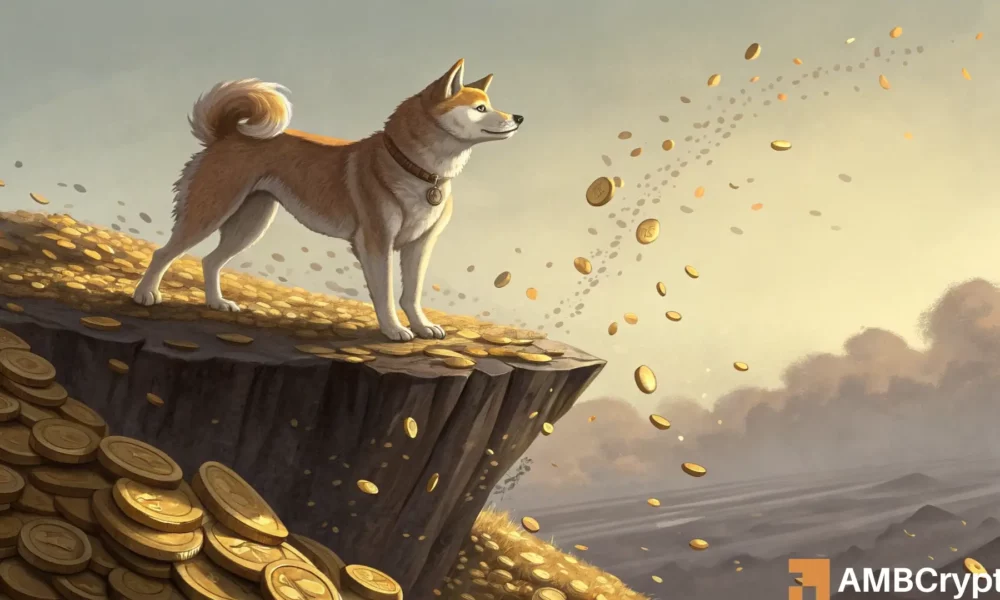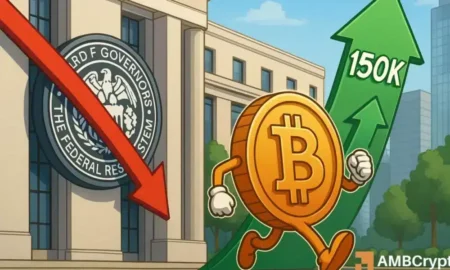Short-Term Outlook for Dogecoin (DOGE): Analyzing Market Trends
As we delve into the current state of Dogecoin (DOGE), it’s essential to understand its short-term outlook and the underlying market dynamics influencing its price. A significant bearish trend has emerged recently, primarily driven by Bitcoin’s volatility. In the last 24 hours, Dogecoin faced a notable setback, dropping to approximately $0.176 after a modest high of $0.194. This decline of about 9.34% highlights the prevailing short-term bearish sentiment within the cryptocurrency market, as key indicators point towards potential challenges ahead for Dogecoin prices.
The Impact of Bitcoin’s Performance
Bitcoin (BTC) has exhibited considerable fluctuations, trading within a defined range between $107.5k and $124.5k since August. The recent dip below this range raised significant concerns, suggesting an immediate bearish trend for alternative cryptocurrencies like Dogecoin. As Bitcoin briefly fell to $106.3k, it contributed to the downward pressure on Dogecoin, showcasing how correlated price movements between leading cryptocurrencies can impact market behavior. The selling volume observed, especially the decline in Open Interest by 3.55%, indicates that traders are navigating caution amid the current volatility.
Key Support Levels to Monitor
The demand zone around $0.175 has proven crucial for Dogecoin, acting as a psychological support level for bulls. However, with evident selling pressure and a determination where the On-Balance Volume (OBV) has charted lower lows compared to the beginning of August, the overall sentiment leans bearish. Should Dogecoin break below the $0.175 support level, the next significant target to monitor would be approximately $0.15. This price point aligns with the rising wedge pattern established in previous months, marking a critical juncture for market participants.
Analyzing Network Activity
Examining the so-called on-chain metrics, we see a contrasting picture developing. Daily active addresses associated with Dogecoin have witnessed a decline in October, indicating a reduction in active market participation. This decrease suggests waning organic demand, essential for driving price increases. Contrarily, the mean coin age has seen an uptick, indicating on-chain accumulation by some investors. Although there have been fluctuations in the age consumed metric, they have not reached alarming levels, hinting at a mixed sentiment surrounding Dogecoin’s future.
Accumulation vs. Selling Pressure
While the increased mean coin age could reflect some level of confidence among longer-term holders, it appears insufficient to counterbalance the prevalent selling pressure. The data suggests that while some investors may be accumulating Dogecoin, the net effect has not overshadowed the existing market trends indicating bearish sentiment. Unless there is a significant influx of capital to stimulate demand, the current selling spree may continue to dominate the price index for Dogecoin.
Conclusion: Preparing for Potential Outcomes
In summary, the short-term outlook for Dogecoin indicates a bearish phase, shaped largely by Bitcoin’s price action and declining network metrics. While the demand zone around $0.175 provides temporary support, a breakdown could lead to significant further declines to $0.15. Traders and investors should remain vigilant, tracking market trends and Bitcoin’s performance closely, to navigate the intricacies of Dogecoin’s evolving landscape. Given the current economic indicators, a cautious approach seems prudent for anyone involved in trading or investing in DOGE within this tumultuous climate.
















